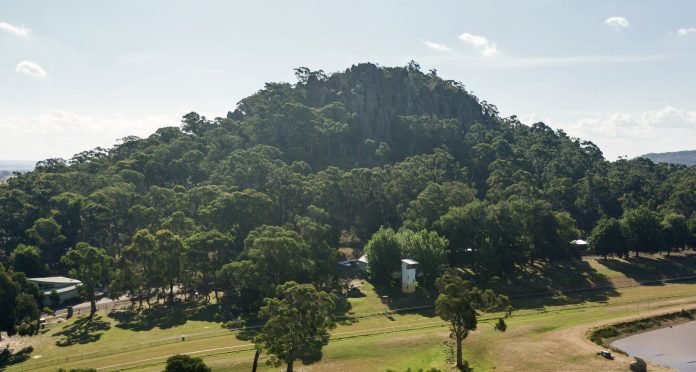
Significant Treaty legislation introduced into the Victorian Parliament last week has re-ignited speculation in certain quarters about possible changes to the names of specific landmarks and waterways on state-controlled land.
Could it be that the widely known phrase ‘Picnic at Hanging Rock’ eventually changes to ‘Picnic at Ngannelong’?
Under the legislation introduced last week by the state government, the new Treaty controlling body could put forward traditional names for specified geographical features.
In recent years in some other Australian states there have been changes made that have led to both long-time existing European-inspired and Aboriginal names being used jointly on maps and sign postings.
Nearly three years ago, Daylesford Macedon Tourism chief executive Steve Wroe penned an insightful and in-depth explanatory document, which the Express reproduces for the enlightenment of many readers.
INDIGENOUS HISTORY OF HANGING ROCK
“Ngannelong was a sacred place for ceremonies, meditations, and initiations for at least 26,000 years.
In a former life, I had a job that meant I spent a lot of time at Uluru Kata Tjuta National Park…and even more time in Kakadu National Park, having lived there for a year.
It was a great honour to work in these iconic places and now I have the honour of working in a region that’s home to Hanging Rock…also known as Mount Diogenes…and before that, Ngannelong…or Anneyelong.
The very name of this famous site raises all sorts of questions. Should we start using the Indigenous name for this site, as has happened at Uluru and many other sites around Australia? The answer, in my view, is ‘yes’ but it also raises further questions.
For starters, there is some conjecture as to the actual Indigenous name of the site. A German naturalist created an engraving of the rock in the mid 1850s using the name ‘Anneyelong’ but toponymists believe that he misheard the name and it’s actually ‘Ngannelong’. No one is sure.
One of the challenges facing anthropologists, historians and, indeed, the various Traditional Owner groups around Australia, is that Indigenous stories were passed on verbally – there was no written Indigenous language here.
This would have been fine; after all this culture stretches back tens of thousands of years and was travelling along perfectly well until white people showed up. The cataclysmic impact of European settlement on the Indigenous people and culture is well known.
One of the many tragic outcomes of the upheaval was that many of the rich cultural stories have been lost, or are in danger of being lost, for ever.
So, when I was asked to write an article on the Indigenous history of ‘the rock’, I was surprised at the lack of available information.
What we do know is this: the site – let’s call it Ngannelong – is located near the traditional boundary between three Aboriginal tribal groups – the Woi Wurrung (Wurundjeri), the Dja Dja Wurrung and the Taungurung.
Each has its own perspectives and stories, but evidence suggests that the group were highly inter-connected and it is clear that Ngannelong was a sacred place for all three groups and was used for ceremonies, meditations and initiations for at least 26,000 years … possibly more like 40,000.
Archaeologists have unearthed stone tools dating back at least 10,000 years at the site. The sources of the stone used to make tools found at Hanging Rock come from a considerable distance, suggesting that Ngannelong was the site of a much larger social and economic network. There is also a natural spring that provided a valuable source of water.
As a prominent culturally significant landmark near tribal boundaries, the rock is likely to have been used for Ngargee ceremonies (Corroborrees) and other traditional business that involved gatherings between the three groups for marriages, resolution of conflicts, trade and initiation.
When you consider that the three traditional owner groups have been visiting the site since at least the last ice age, it puts into perspective the importance of Ngannelong as part of Indigenous history. It also gives us some perspective into the remarkable longevity of the Australian Aboriginal culture.
Jesus was born a couple of thousand years ago. The pyramids were built 5000 years ago. At least 26,000 years ago Indigenous people were performing ceremonies at what we have been calling ‘Hanging Rock’ for a few decades.
Next time I visit Hanging Rock/Ngannelong (we take our kids there often), I’ll stop to take a moment to reflect on this. I encourage you to do the same.’ he concluded.






